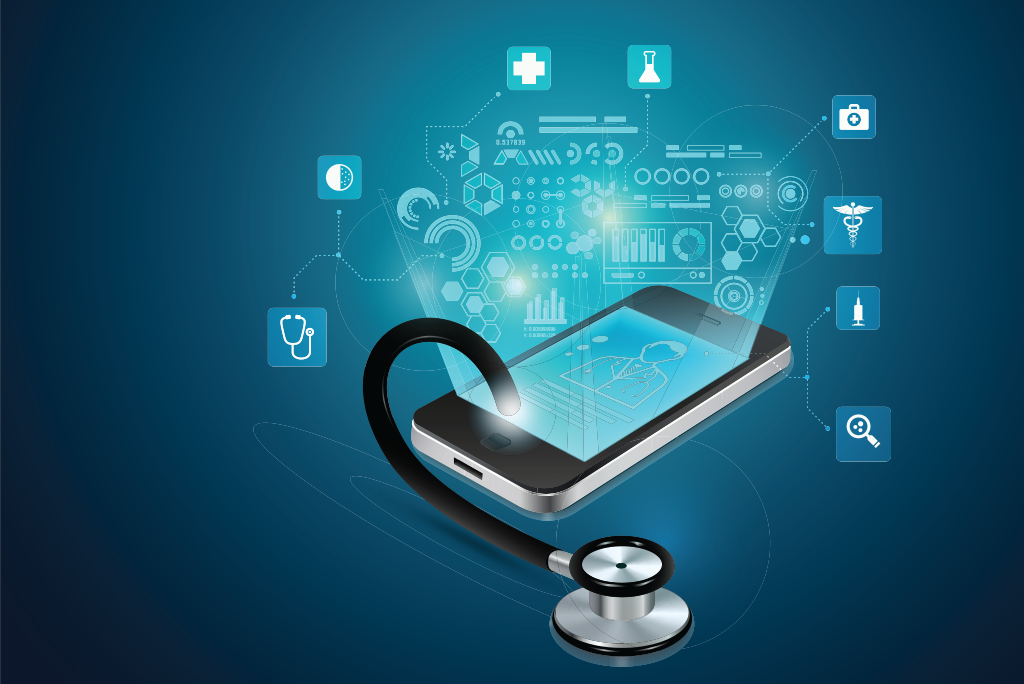
Three important qualities of blockchain—decentralization, immutability, and security—could have many interesting use cases in the healthcare industry. One area that could greatly benefit from blockchain technology is telemedicine, the relatively new field of providing remote delivery of healthcare services over telecommunications. While digitizing healthcare as a whole still has a long way to go, authenticating healthcare data might become reality a little sooner.
Secure data sharing
Blockchain technology allows for the instantaneous sharing of information in a secure and coded format. Considering the sensitivity of the data, leveraging digital technology to share information in the healthcare industry has not been easy. Healthcare professionals currently focus on health information exchanges, which is meant to seamlessly share patient information. However, this practice does not always work.
Blockchain technology gives healthcare professionals the opportunity to access the desired information in a decentralized ledger. This integration also allows for the elimination of information blocking. Ideally, this would provide patients the ability to access their medical records when needed and to securely share the information with their chosen doctors.
Blockchain technology can allow for complete cryptographic record-keeping of a person’s information from birth. This past July, the first baby to have their birth certificate officially recorded on the blockchain was registered in Rio de Janeiro, Brazil. Using IBM’s Blockchain Platform, this blockchain birth certificate offers a look at a potentially digitally-secured life starting from birth.
Improved Security
There have been security concerns when it comes to telemedicine. If the connection between a doctor and patient is not secure, it increases the risk of a data breach. Blockchain technology, when applied to this scenario, creates a secure network. In the healthcare industry, distributed ledger technology could create efficient ways to transfer data effectively and communicate across organizations.
“Blockchain also allows medical records to be stored in secure, fragmented systems that can contain large amounts of data and information, enabling providers to store a more complete patient history and securely encrypt medical data,” explains Blaise Wabo, associate director of A-LIGN, a cybersecurity technology, and services vendor. “Furthermore, providers could create a private network for their blockchain and only invite patients directly.”
Obstacles for Blockchain in Telemedicine
Barriers preventing the adoption of blockchain in telemedicine include cost, lack of knowledge on how to implement it, and the lack of standardization.
“The cost of implementing the technology and extending participation to lower supply tiers is a concern because blockchain technology relies on intensive computing power and hence a lot of electricity to operate,” states Wabo. “This might be especially difficult for patients in rural areas, due both to a lack of resources and infrastructure.”
Growth of the Blockchain to your industry
Stay up-to-date with the latest advancements in blockchain technology as it continues to grow. If you’re interested in learning how blockchain could affect your industry, check out Enterprise Blockchain for Healthcare, IoT, Energy, and Supply Chain, a five-course program from IEEE.
To get a license to this online program for your organization, contact an IEEE Content Specialist today for more details.
Want the program for yourself? View the courses on the IEEE Learning Network, a new learning management platform!
Resources
Siwicki, Bill. (16 October 2019). How blockchain can protect telemedicine programs. Healthcare IT News.
Kaaru, Steve. (26 October 2019). Growth factors for blockchain in healthcare. CoinGeek.
Dormehl, Luke. (1 November 2019). For better or worse, blockchain birth certificates are officially here. Digital Trends.


[…] over 55 million people infected with COVID-19 worldwide, hospitals are under enormous strain, and remote care is needed more than ever. To meet the growing demand, the European Commission has created an (EUR) […]